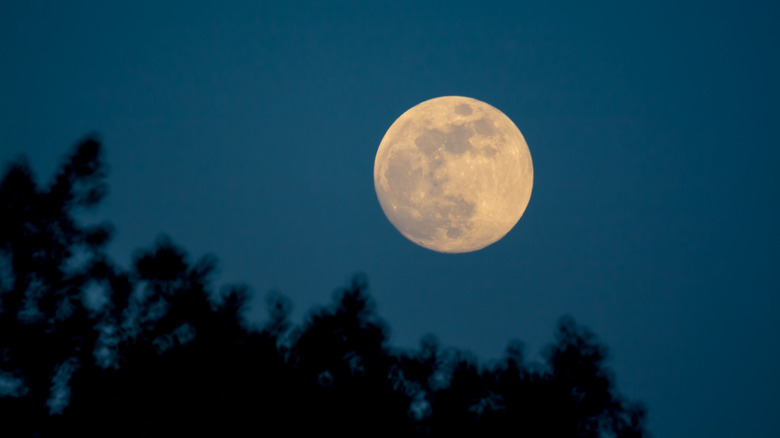What Is The 'Moon Illusion' And Why Does It Make The Moon Look Bigger?
This month's full moon is an extra special one, thanks to an optical illusion so baffling, nobody actually knows how it works. If you live in the Northern Hemisphere, and you step outside tonight, you'll notice that the moon looks much bigger than it normally does, and it's lying very low on the horizon. Of course, the moon doesn't actually change size, and it's going through the exact same cycle of lunar phases as it does every other month. The fact that it looks bigger is simply a trick of the eye known as the moon illusion, and scientists aren't completely sure why it happens.
The full moon goes by different names depending on the time of year, and a July full moon is commonly called a buck moon due to the fact that it coincides with the time of year when a male deer's antlers reach their full growth. Buck moons often attract special attention for a few reasons. Firstly, this year's buck moon is the first full moon of the summer season, falling less than a month after the solstice. Buck moons also tend to appear low on the horizon, sometimes taking on an orange hue much like a harvest moon. Both of these factors are related to the moon illusion, but we still don't know why the moon looks so much bigger the lower it is in the sky.
Why the moon illusion has scientists stumped
The summer solstice marks the point when the sun is highest in the Northern Hemisphere sky (hence why summer has more daylight hours). The higher the sun, the lower the moon, meaning that the summer solstice also puts the moon at its lowest annual point on the horizon. This means that the buck moon, or occasionally the strawberry moon of June, tends to be the lowest full moon of the entire year.
When the moon is very low on the horizon, it appears much larger to the human eye. However, if you take a photograph of the buck moon and compare it with the midwinter full moon that appears high in the sky, you'll see that they are actually the same diameter. The illusion does not transfer to photographs, meaning it must be a trick of the human mind alone. It's a mystery that has researchers scratching their heads.
The best explanation that anyone has come up with is that, when the moon is low on the horizon, it gets framed by foreground objects like trees and buildings, which make it seem closer and larger by comparison than when it is high in the sky with nothing around it. However, astronauts in low Earth orbit have also reported seeing the moon illusion, which throws a wrench in that theory. It just goes to show that even the brightest scientific minds on the planet can sometimes only stare in awe at the wonders of the universe.

